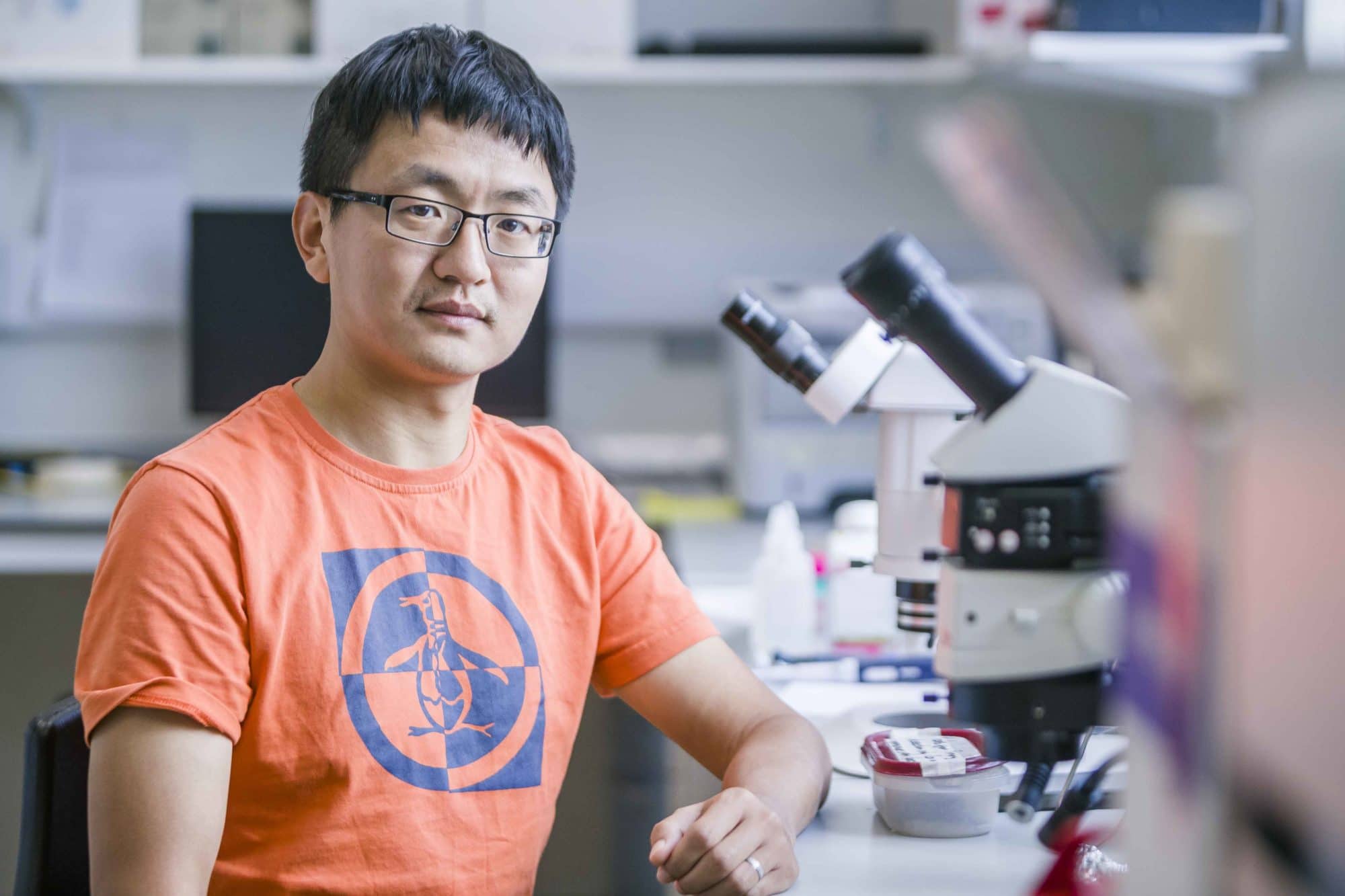
A blog from the research coal face
Bioinformaticians are experts in using computing power to tease out meaningful answers from large amounts of biological data. Their skills are indispensable to research teams, like the UKIRDC, who are hunting through whole DNA sequences (genomes) from huge numbers of individuals, trying to find more of the genetic changes that cause sight loss.
In this blog post, Jing shares with us the exciting outcomes of some of his recent work.
“A patient with a retinal disorder goes to clinic to find out “why”, and the answer usually lies in their genome. A rare change or two in the genome are often found responsible, and finding them is crucial in managing the patient’s condition, and sometimes even promises cures.
“However, finding the disease-causing changes is not without a challenge: they are often hidden among hundreds of thousands of other mostly benign variations in the DNA. Luckily, recent advances in computer science and bioinformatics made it possible to quickly find out what each genomic change is and the chances of them being responsible; it is more and more common for us to find the disease-causing changes within minutes after the computers have done their jobs.
As we are getting better and better analysing short genomic changes for genetic diagnosis, those involving long ranges of the genome, or structural variants, remain hard to decode*. I was tasked with finding disease-causing structural variants in the genome data sequenced from 101 patients with retinal disorders. This work was kindly funded by Retina UK, as a project of the UK Retinal Dystrophy Consortium. Empowered by modern computing infrastructure, I was able to develop a tool that can help quickly find disease-causing structural variants, just like the way we study short genomic changes.
It turned out to be a huge success; and I, with the help of many other amazing people, developed a more advanced tool, called SVRare, for the 100,000 Genomes Project by Genomics England. Within a month of its deployment, SVRare already helped with around 80 new diagnoses based on structural variants, including many for retinal disorders. Half a year in, we are still coming up with new diagnoses on a daily basis.
SVRare started with retinal disorders, but its impact is far-reaching beyond: patients with other diseases are benefiting from it by finally finding out “why”, with many of them having to endure over 20 years of diagnosis odysseys. This ground-breaking work would not be possible without the generous support from Retina UK. I am forever grateful.”
*Note from Retina UK: Until very recently, nearly all of the disease-causing genetic changes identified by researchers have been simple, short “spelling mistakes” in the genetic code – one genetic “letter” replaced by a different one. However, in 2019, UKIRDC researchers and their collaborators found a change in the way a small part of the DNA molecule’s structure is arranged, which results in significant alternations to the behaviour of certain genes and ultimately leads to a particular type RP. The researchers realised that these structural variants could be really important in other cases, which prompted Jing’s work described in this blog.
